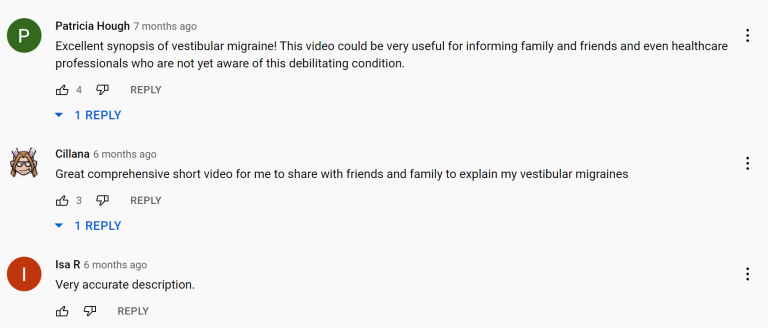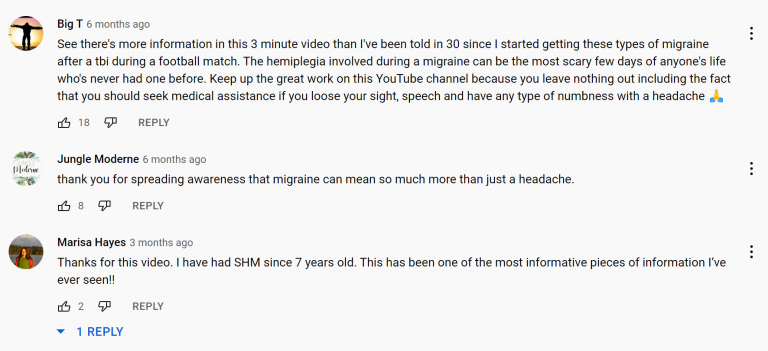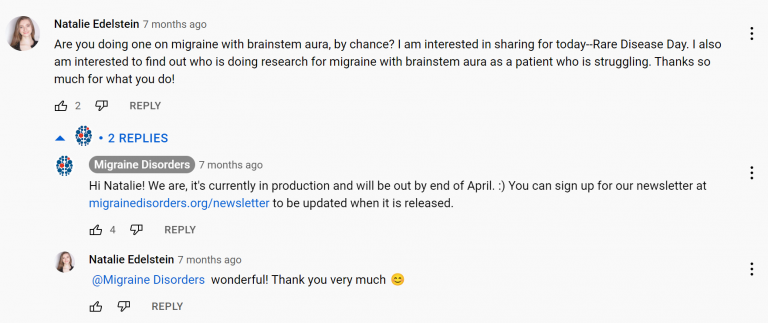Working with the Association of Migraine Disorders (AMD) on a patient education video series project, we’ve realized many aspects need noticing rather than only producing animation videos for patients.
Because an effective animated patient education strategy requires creative, marketing, and risk management skills rather than animation production itself. It’s about ensuring the accuracy of health illustrations, analyzing the patient’s taste, aligning animation styles to healthcare brand guidelines, knowing the most challenging part of the animation production process, and dealing with time pressure while maintaining quality consistency.
The case of AMD inspires us to switch our consultation direction, asking project-based questions (favorite animation styles, minute numbers, deadline, or budget) and business-based questions like “how do these video series contribute to AMD’s mission?”.
AMD’s project at a glance
The story of AMD
The Association of Migraine Disorders is a healthcare organization that expands the understanding of migraine via patient education, scientific research, and awareness campaign. Since migraine is a popular symptom that indicates many health issues, patients and physicians find it hard to diagnose the right disease. AMD wants to deliver this message to all stakeholders – patients, healthcare specialists, and the public.
F.Learning collabs with AMD to create a more patient-friendly healthcare knowledge hub starting with 20+ videos per year.
The challenge behind the term “video series”
If you outsource a “video series” project, the total cost is not only the animation production cost. It also covers the cost of risk like management risk, time cost, losses, etc. However, on the flip side, it also covers the opportunity cost like patient engagement, followers, and public awareness. In other words, any manager needs to understand the potential risk behind each solution and not fall into the trap of choosing one because it can be used immediately.
We’ve worked on the project with Melissa Calise – AMD’s Head of Communication. After the first call, F.Learning wrapped up the most significant challenges as below:
- Animation for patients requires both medical accuracy and creative
- The animation style needs to align with AMD’s brand guideline
- Reduce the cost of risk (bad quality, fixing, deadlines) as much as possible.
How F.Learning responds to the challenges
1. Get a big picture of the project
We first need to understand why AMD decided to make the video series to deliver the outcome successfully. We ask many questions related to AMD’s brand mission, try to put the project in the whole picture of the brand, and understand the role of AMD’s board members. Based on this information, F.Learning created a style direction for the whole series. In the style guide, we have all the rules of where to put brand color, how the illustration should fit AMD social media channels and how the vibe we should create to fit patients.
2. Get the current status of the project
Before working with F.Learning, Melissa had 2 previous failed vendors. She worried because she felt the last output was terrible but didn’t know why. Moreover, the vendor didn’t offer her a revision process, so she was clueless about what was going wrong.
“We faced many difficulties before finding F.Learning. Some companies were too expensive and didn’t offer customized graphics or high-quality videos. Also, others were far too time-consuming.”
Melissa Calise – Head of Communication
To address the issue, we asked her for permission to check the previous output and realized the problem in the script analyzing process. Script analyzing is a small step between scripting and storyboarding. At this stage, we split the script into pieces, identified key points, and decided on the audio and visual parts. Since the animation video script is visual-based, script analysis is extremely important. Generally, customers hardly see the step in animation blogs. That’s why they conflict with vendors when the video doesn’t go as expected in the script.
3. Offer a 1-minute demo
Instead of explaining the F.Learning process, we let Melissa experience our products and services via a 1-minute demo project so she could imagine how her video goes through the production stage. Our project manager consults her on how to put the brand color in the right place, heck the knowledge accuracy of health illustrations, or arrange different tasks to save time and effort effectively. During the demo, Melissa can review each stage and track how the project is going.
4. Optimize the hidden cost
When AMD contacted us, we had only 2 months before the publishing time. For a project of 20+ healthcare videos, you need to produce many illustrations and different characters’ movements and expressions from scratch. Thus, the process of managing everything in a short amount of time becomes difficult. In this situation, we consider solutions that utilize both F.Learning and AMD’s existing resources.
Luckily, our R&D team builds a library with 10,000+ illustrations on healthcare topics such as organs, pharma, health staff, medical devices, etc. For over 5 years, we have worked with physicians, nurses, and healthcare researchers to ensure medical accuracy. Moreover, our creative team has developed each illustration with different vibes based on different audiences. In a nutshell, the library saves us a lot of time in illustrating and storyboarding processes. All we need is to customize based on the project’s requirements.
Meanwhile, we optimize the production process in each stage. You can explore how we handle a video series project at scale via the below articles:
The final result
After 9 months, chapter 1 of the video series reaches 39,000 views. The series also receive positive feedback from audiences and patients. Even the materials used to make videos can be re-used as public awareness documents for other AMD’s multichannel strategies.
Melissa was amazed by our working speed while remaining quality. The project doesn’t miss any deadline with 0 costs of risk.
“Everything was perfect. The timeline was clearly communicated and made available to me so I could see the project status at any point.”
Melissa Calise – Head of Communication
Final thought
Is animation time-consuming and expensive? The answer is no when you can find a way to balance hidden risk cost and opportunity cost. Contact F.Learning for a mind-blowing patient education campaign.
Read more:









![5 Best Animated Video Production Companies [Update 2023] 8 review 5 animated video production house](https://cdn.statically.io/img/flearningstudio.com/wp-content/uploads/2021/06/312x200-5-420x500.jpg?quality=100&f=auto)





